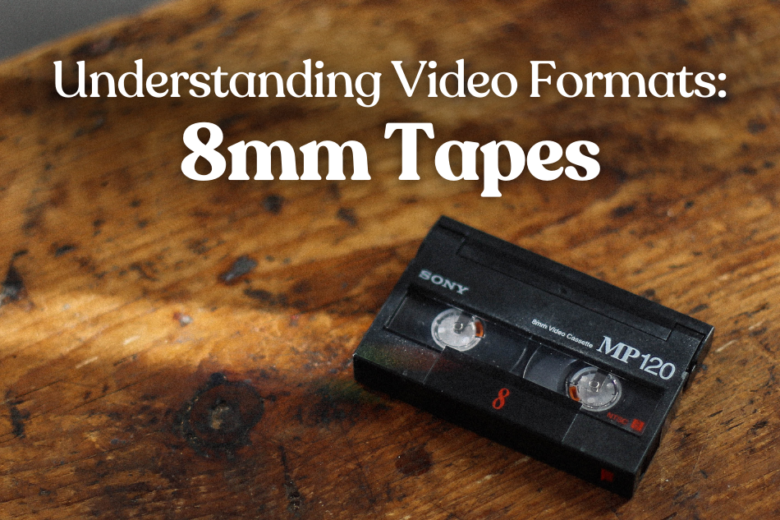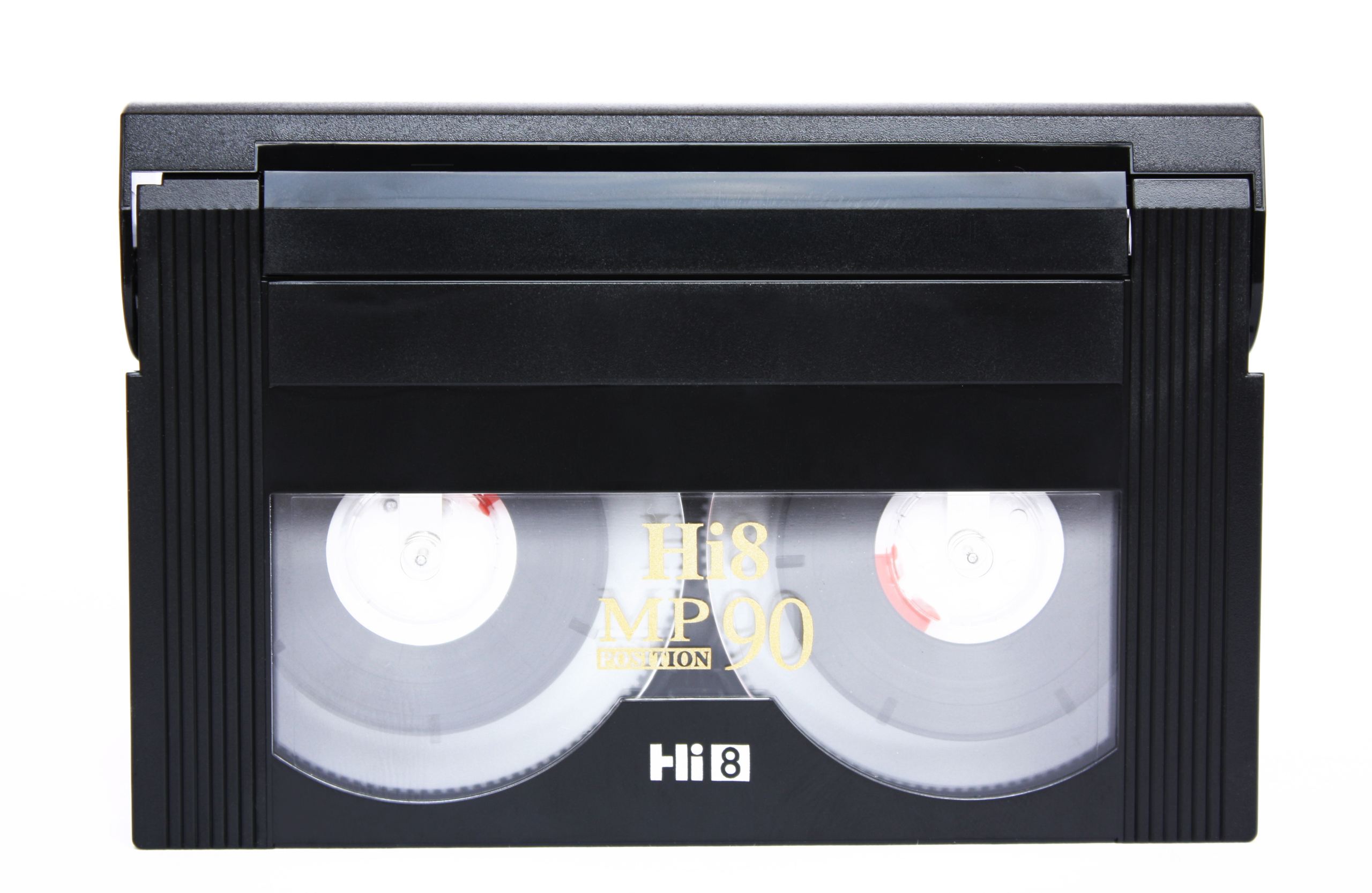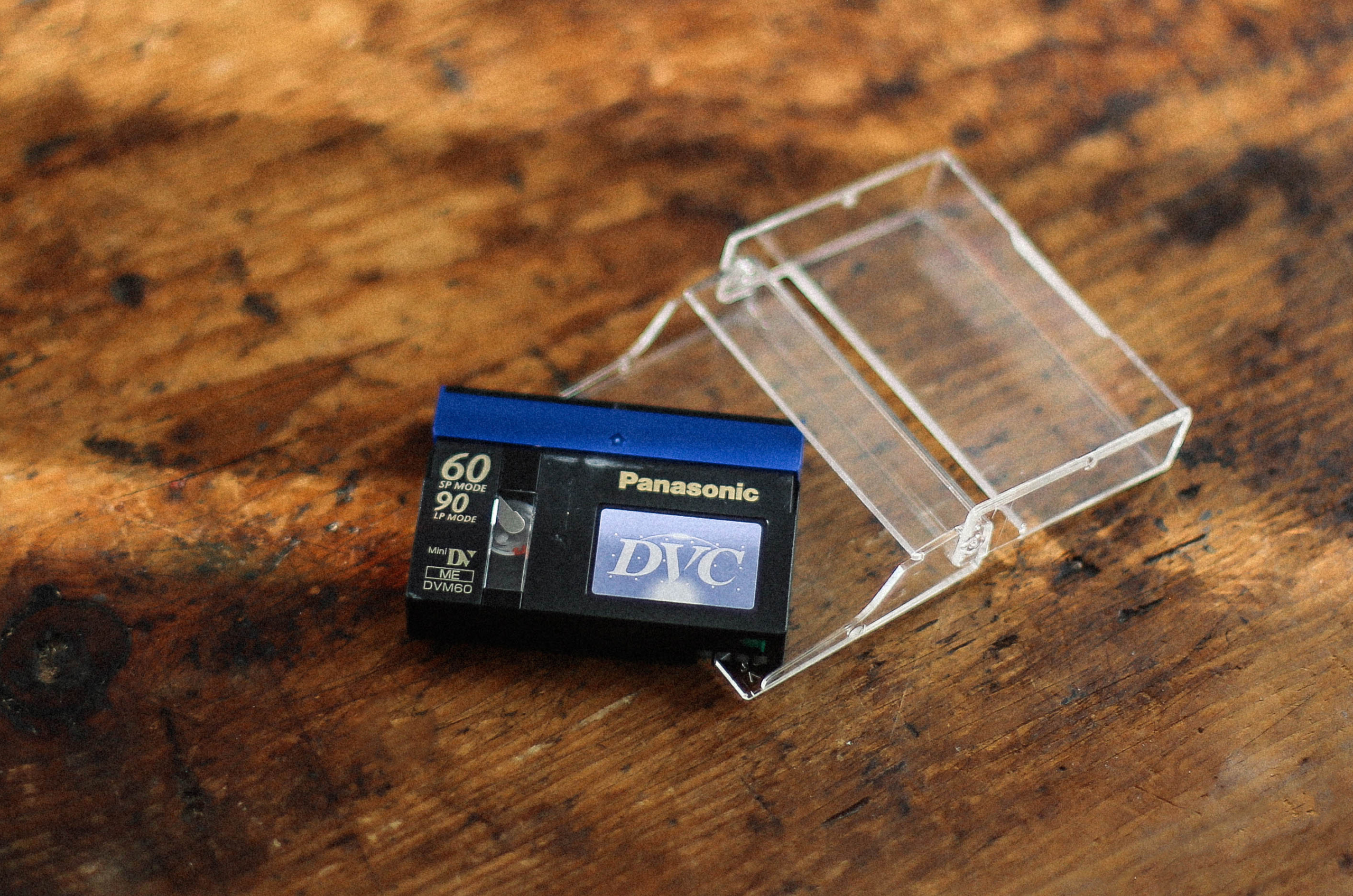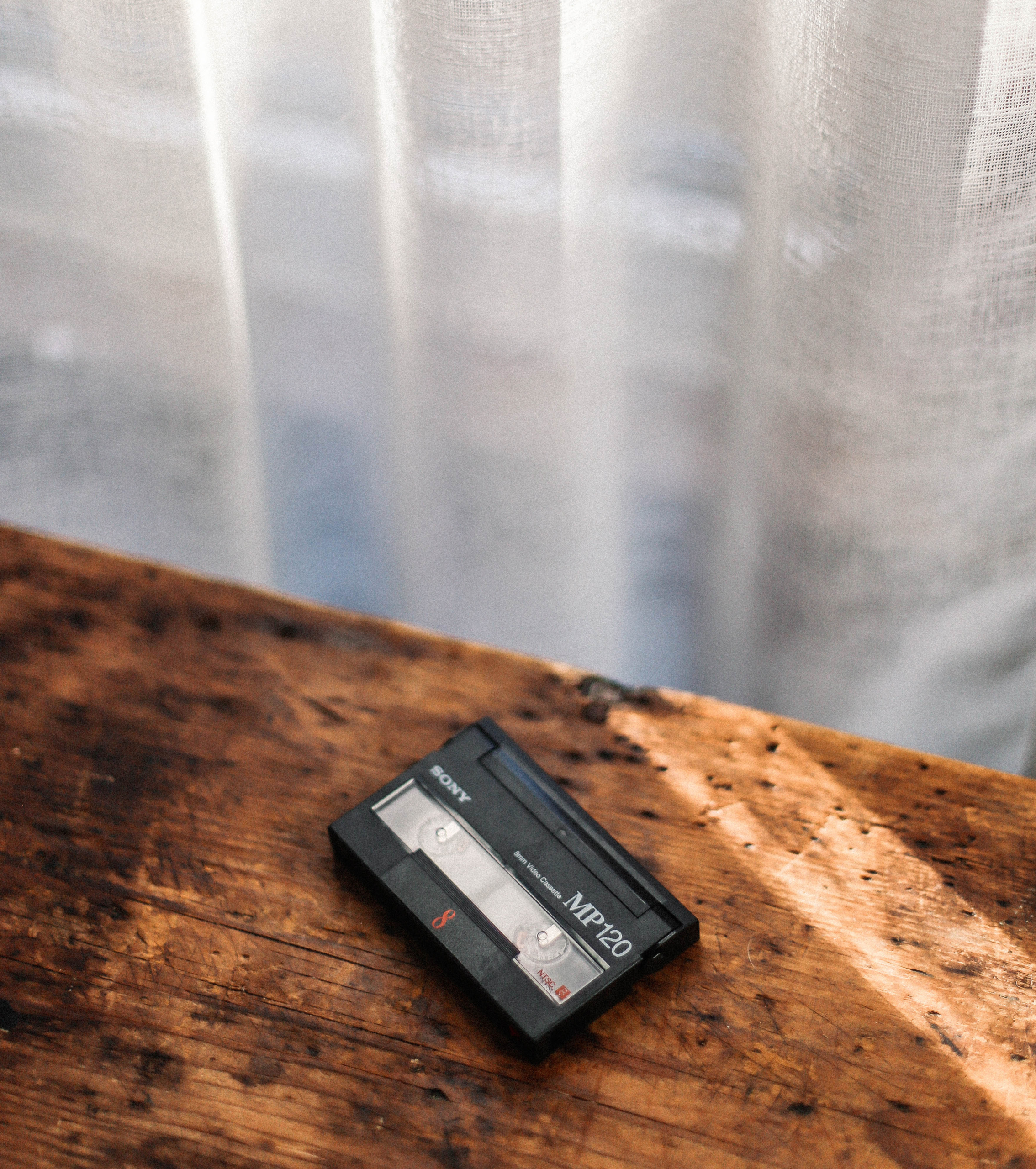“8mm tapes” is one of the more confusing video format terms because it refers to three types of tape: Video8, Hi8, and Digital8. 127 companies agreed to the standardized format before it came to market, which means several brands made 8mm products.
In this post, we break down what 8mm tapes are, what they’re compatible with, how they compare, and how long they last.
WHAT ARE 8MM TAPES?
During the later years of the video format war between Betamax and VHS, professionals and hobbyists turned away from big bulky tapes and focused on new, smaller technologies: VHS-C and 8mm tapes.
These two formats were in direct competition for most of the 80s, both being about a quarter of the size of a normal VHS tape. Aside from their similar size, however, VHS-C and 8mm tapes (the first of which was named Video8) didn’t have much in common. They used different recording formats, placed the information on the magnetic tape differently, and were entirely incompatible.
Video8 tapes provided better visual and audio quality and twice the runtime of VHS-C—but if you wanted to switch to Video8, you had to buy a completely new playback system. VHS-C tapes, on the other hand, were miniaturized VHS tapes and could be played in a normal VCR with an adaptor. This made the switch easier because people could take advantage of the smaller tapes and more compact camcorders without upgrading any other equipment.
HOW LONG ARE 8MM TAPES?
The capacity of 8mm tapes depends on the region they were produced and captured in. North America and Japan used NTSC, which could capture 150 minutes on short tapes and 300 minutes on long tapes. In Europe, Australia, and much of Asia, PAL was used. With this type of encoding, short Video8 and Hi8 tapes had a run time of 120 minutes and long tapes ran for 240 minutes.
ARE Hi8 AND 8MM TAPES THE SAME?
Hi8 tapes are a type of 8mm tape. Video8 came first—it competed with the VHS-C tape and was completely analog. A few years later, Hi8 was released as a higher-quality version of Video8 and competed with the higher-quality VHS equivalent called S-VHS-C.
Hi8 was largely analog as well, but you could write digital information onto it with the right equipment. This reduced the runtime of the tapes by half, however.
Next came Digital8 in 1999 which, as the name suggests, was a digital format. These tapes tend to transfer to DVD with very high quality.
One confusing thing about these three types of 8mm tape is that they all look remarkably similar. You need to pay attention to what is written on the outside of the cassette to distinguish them because they cannot be used interchangeably.
ARE MiniDV TAPES THE SAME AS 8MM?
There are plenty of similarities between MiniDV tapes and 8mm tapes, including the way they look. They’re almost the same size and come in very similar cassettes—and companies like Sony even made both types.
However, most 8mm tapes are either Video8 or Hi8—which means they’re analog. MiniDV, on the other hand, is completely digital. It also produces very high-quality footage and, even though it was intended as a consumer product, it ended up being used professionally.
HOW TO PLAY 8MM TAPES
The first thing you can do to watch 8mm tapes is play them back in an 8mm camcorder. Since you still have the tapes, you might have the camera too—and this makes it super easy to check what’s on them.
There are some points to keep in mind about compatibility, however:
- Backward compatibility allows you to play Video8 tapes in Video8, Hi8, and Digital8 camcorders
- Hi8 tapes, on the other hand, can only be played in Hi8 or Digital8 camcorders
- Similarly, Digital8 tapes can only be played in Digital8 camcorders
If you don’t have access to a camcorder, you can try a few other things. Firstly, you can hook up an 8mm tape player to your TV or monitor. This is retro hardware, however, so you’re just as unlikely to have one of these as you are to have an 8mm camcorder. But, just in case, here are a few models:
- Sony EV-C3
- Sony EV-C200
- Sony GV-A500
Lastly, you can digitize your 8mm tapes. You might want to find out what’s on them before paying for this service, but at the same time, most analog footage is worth preserving. Once you have your videos on a DVD or USB flash drive, you can make as many copies as you like, send them to whoever you want, and play them wherever you like. And the more copies exist, the less likely you are to lose the footage for good.
HOW LONG DO 8MM TAPES LAST?
8mm tapes stay in good condition for around 10 to 25 years but it really depends on the conditions they’re kept in. Sadly, deterioration can also happen even with good storage, so the only way to guarantee your tapes stay safe is to transfer them to a digital file.
HOW TO CONVERT 8MM TAPES TO DIGITAL
8mm tapes are a great format for digitization because they can yield really high-quality results. Deterioration can show during playback, however, so the quicker you digitize your tapes, the better your footage will look.
At EverPresent, we can digitize your Video8, Hi8, and Digital8 tapes and transfer them onto USB, DVD, or cloud archives. We can also label and organize everything for you—including the original collection if you like. We work with both small and large collections, so if you have a project we can help with contact us here for a free quote.




